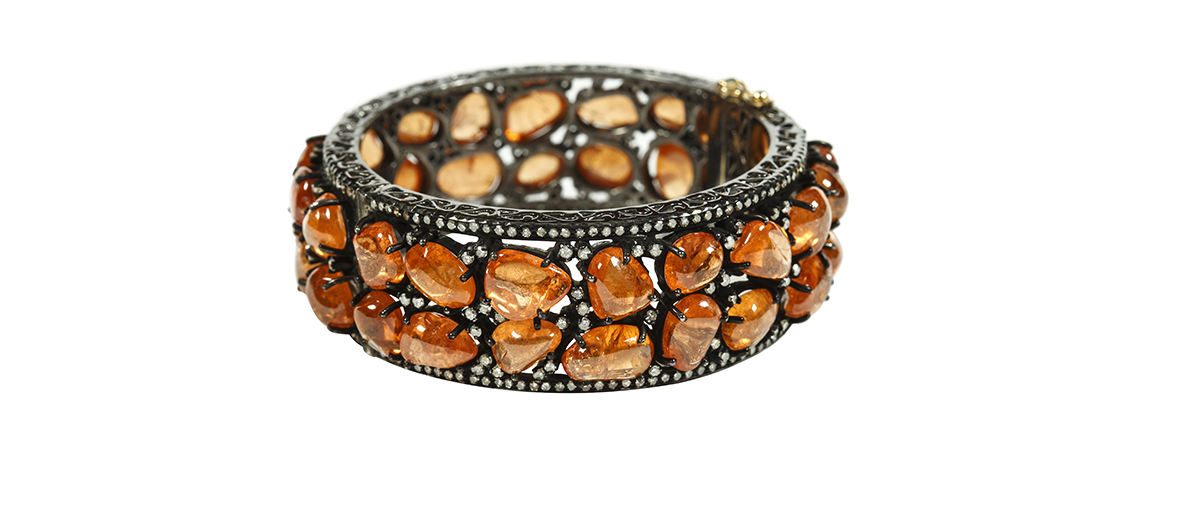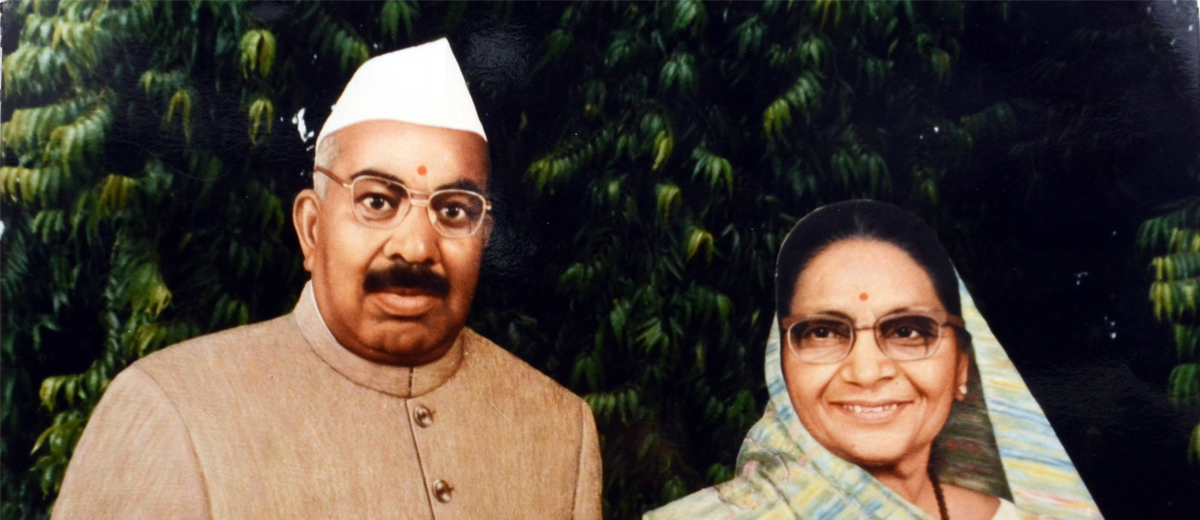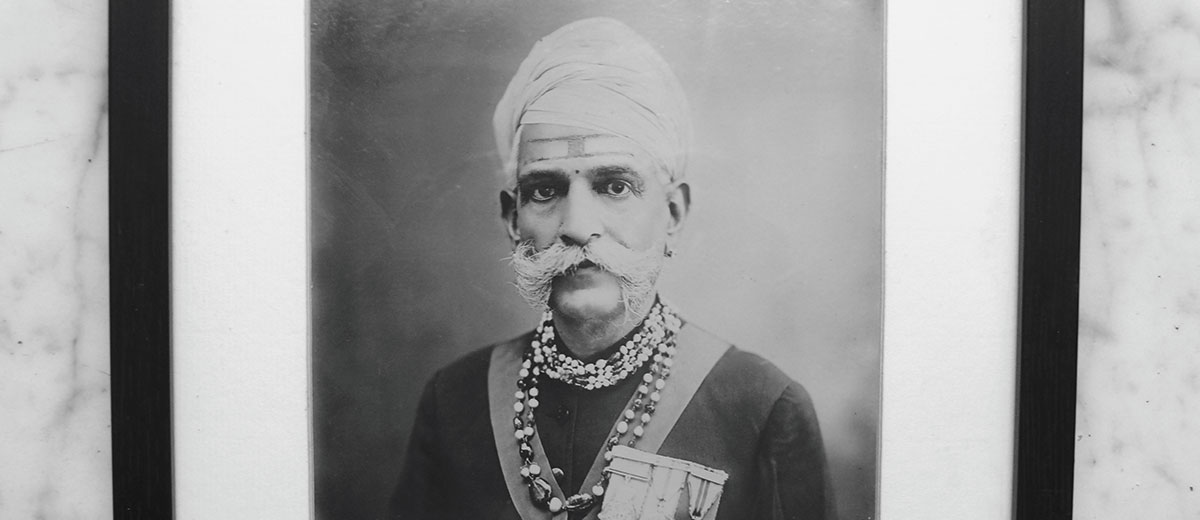
The Fabled Cotton Baron Of Mumbai
 Stretching roughly from Byculla to Dadar—was dotted with no less than a hundred textile mills, earning the city the nickname ‘Manchester of the East’. Many of these today lie dilapidated and abandoned. Some, however, have metamorphosed into swanky business parks and perhaps the most iconic among them is the Phoenix Mills (at Lower Parel) that not just retains some semblance of its past but also remains in the possession of its original owners, the Ruias of Ramgarh. Now rechristened High Street Phoenix, true to its name, it has not just risen above its ashes after the turbulent labour unrests it witnessed in the eighties and the nineties, its extensive premises now house one of India’s largest shopping malls, a five-star hotel and a multiplex. Its sister mills—the Dawn Mills and the Bradbury Mills have gone other ways though. Once a part of the huge business empire set up by the Ruias’ illustrious forefather, Ramnarain Ruia, they bear testimony to the entrepreneurial prowess of the man who was counted among Bombay’s cotton tycoons.
Stretching roughly from Byculla to Dadar—was dotted with no less than a hundred textile mills, earning the city the nickname ‘Manchester of the East’. Many of these today lie dilapidated and abandoned. Some, however, have metamorphosed into swanky business parks and perhaps the most iconic among them is the Phoenix Mills (at Lower Parel) that not just retains some semblance of its past but also remains in the possession of its original owners, the Ruias of Ramgarh. Now rechristened High Street Phoenix, true to its name, it has not just risen above its ashes after the turbulent labour unrests it witnessed in the eighties and the nineties, its extensive premises now house one of India’s largest shopping malls, a five-star hotel and a multiplex. Its sister mills—the Dawn Mills and the Bradbury Mills have gone other ways though. Once a part of the huge business empire set up by the Ruias’ illustrious forefather, Ramnarain Ruia, they bear testimony to the entrepreneurial prowess of the man who was counted among Bombay’s cotton tycoons.
Ramnarain Ruia was born so far back that very little record of his life and contributions survive except perhaps a treasure trove of photographs in family albums, now yellowed with age, and stories passed down from generation to generation through oft-repeated narratives. But pictures sometimes are worth more than a thousand words, memories of greatness outlive entire generations and often there is much truth in what gets passed down the ages, even if they be hearsay. It is with these surviving nuggets of information, graciously made available to us by members of the Ruia family—Amla Ruia, the grand daughter-in-law of Ramnarain Ruia; Anil Ruia, grandson of Ramnarain Ruia and son of of Sushilkumar Ruia; and Aditya Ruia, great-grandson of Ramnarain Ruia and grandson of Ramniwas Ruia—that this story on Ramnarain Ruia has been made possible.
 Foray Into Cotton
Foray Into Cotton
The Ruias originally went by the ‘Jalan’ surname and were from Fatehpur in Rajasthan. Tracing the Ruia lineage, one comes to Khetsidas Ruia and his five sons, with whom the Ruias’ foray into the cotton business purportedly began in the early nineteenth century. Khetsidas’ third son was Harnandrai Ruia (1831–1912), and by the time he took charge of the business, the family had gotten into the cotton trade in a big way which brought about the change of surname. “The Ruia surname originated in Rajasthan owing to the family trading in cotton,” says Aditya Ruia. “According to family sources, the original name of the Ruia family is Jalan, the gotra of the Jalan family and the Ruia family being the same.”
The Ruias’ business flourished in Fatehpur and all was well until they got into a dispute with the Nawab of Fatehpur over levies on the passage of goods. The dispute came to a head and at one point the Ruias felt they had no choice but to leave Fatehpur. So they decided to shift en masse to Ramgarh, where the Poddars—yet another prosperous merchant family from Churu—had shifted earlier and had established a small township. This migration is estimated to have happened in the second half of the nineteenth century. Thereupon, the two families jointly developed Ramgarh.
 From Ramgarh to Bombay
From Ramgarh to Bombay
The Ruias’ mainstay was cotton which they procured from the Malwa region (Indore–Bhopal) and exported to Armenia and other Central Asian countries through ancient trade routes. As fate would have it, in 1869, the construction of the Suez Canal (connecting the Red Sea to the Mediterranean Sea) obviated the need to transport goods overland. It seriously disrupted the economy of the Shekhawati region, forcing many tradesmen to migrate to Bombay and Calcutta. To make matters worse, an excessive Brahmin influence in Ramgarh was not proving to be conducive for the youngsters of the Ruia family. These factors forced Harnandrai Ruia to send his sons to Bombay where four pedhis (firms) were established in Kalbadevi, Bhuleshwar and Mumbadevi. Each of the four sons was allotted a separate house at Andheri and each was entrusted a part of the diverse businesses set up by Harnandrai Ruia. The four sons were Surajmal, Ghanshyamdas, Ramnarain and Baijnath. Ramnarain (then known as Ramnarain Harnandrai), according to family sources, was born around the 1860s.
 Bombay in those days was a hotspot for opium and cotton trades. Among the prominent Indian houses to dominate the Bombay cotton industry were the Tatas, Petits, Wadias, Currimbhoys, Sassoons, Khataus, Goculdas, etc, while major houses like the Tatas, Sir Jamshedjee Jeejeebhoy, among others, were engaged in opium trade. Talking about the times Aditya Ruia says, “A Ruia firm (pedhi) was established at Kalbadevi in Bombay in 1853 by Harnandrai Ruia which initially traded in the opium. Later, he traded in oilseed and other commodities. In 1883, his son, Ramnarain Ruia, became a broker to the well-known Armenian firm, Sassoon J David. In 1891, he became a guaranteed broker to the firm’s cotton department. This was because he had loaned monies to the firm which guaranteed him an overriding commission on all the firm’s cotton trades.”
Bombay in those days was a hotspot for opium and cotton trades. Among the prominent Indian houses to dominate the Bombay cotton industry were the Tatas, Petits, Wadias, Currimbhoys, Sassoons, Khataus, Goculdas, etc, while major houses like the Tatas, Sir Jamshedjee Jeejeebhoy, among others, were engaged in opium trade. Talking about the times Aditya Ruia says, “A Ruia firm (pedhi) was established at Kalbadevi in Bombay in 1853 by Harnandrai Ruia which initially traded in the opium. Later, he traded in oilseed and other commodities. In 1883, his son, Ramnarain Ruia, became a broker to the well-known Armenian firm, Sassoon J David. In 1891, he became a guaranteed broker to the firm’s cotton department. This was because he had loaned monies to the firm which guaranteed him an overriding commission on all the firm’s cotton trades.”
In a way, Ramnarain Ruia’s business dealings with Sassoon J David was instrumental in helping him establish himself as one of the biggest cotton merchants of Bombay. The other factor which worked in his favour was that Bombay at the time was going through a boom period with cotton and textile mills coming up in droves in the Girangaon area. It helped Ramnarain Ruia take the ambitious plunge from a cotton merchant to a mill owner. This happened around 1920, when he purchased Phoenix Mills from Sir Sassoon J David. “It was entirely a solo effort,” says Anil Ruia, emphasising Ramnarain Ruia’s huge achievement. “However, he was fortunate to have the support of Sir Sassoon J David, with whom he had established a very close relationship. Actually, it was Sir Sassoon J David who persuaded him to buy the Phoenix Mills to start with.”
 With his appetite whetted as a mill owner, Ramnarain Ruia purchased the Bradbury Mills (at Kalbadevi) soon after. (A third mill—the Dawn Mills, at Lower Parel—was also added later to the list of family-owned mills when Ramnarain Ruia’s son Radhakrishna purchased it from Sir Allwyn Ezra in 1935). These mills commanded extensive markets and their produce made it to the farthest corners of India and sometimes even beyond. Phoenix Mills, for example, produced fine fabrics which were sold at the Mulji Jetha Market (a sprawling textile market near Zaveri Bazaar) and Bradbury Mills produced mainly ticking fabric for beds, which in addition to being sold at the Mulji Jetha Market was exported to the UK and Australia. Dawn Mills produced hosiery and yarn which was sold in Chakla Street (in Bombay’s Masjid area).
With his appetite whetted as a mill owner, Ramnarain Ruia purchased the Bradbury Mills (at Kalbadevi) soon after. (A third mill—the Dawn Mills, at Lower Parel—was also added later to the list of family-owned mills when Ramnarain Ruia’s son Radhakrishna purchased it from Sir Allwyn Ezra in 1935). These mills commanded extensive markets and their produce made it to the farthest corners of India and sometimes even beyond. Phoenix Mills, for example, produced fine fabrics which were sold at the Mulji Jetha Market (a sprawling textile market near Zaveri Bazaar) and Bradbury Mills produced mainly ticking fabric for beds, which in addition to being sold at the Mulji Jetha Market was exported to the UK and Australia. Dawn Mills produced hosiery and yarn which was sold in Chakla Street (in Bombay’s Masjid area).
Diverse Business Interests
Cotton and textiles apart, Ramnarain Ruia’s interests extended in other areas as well such as banking, insurance, steel and shoes. Then known as Ramnarain Harnandrai, the now-famous Bank of India was co-founded by him, together with Sir Sassoon David and Sir Cowasji Jahangir Readymoney; he was one of its largest contributors. As one of the first directors of the bank, his signature appears on the early share certificates of the bank (Source: Bank of India Centenary Volume).
According to the Ruai family, Ramnarain Ruia was also a founding member of the New India Assurance Company. Further, he owned a company called Noble Steel which manufactured safes, etc, and was a partner of Carona Sahu, a shoe manufacturing company. These diverse business interests brought wealth and prosperity to him, some of which translated into real estate. Among the many properties owned by him included the ‘Ruia Park’ at Juhu and houses in Pune (which were similar to the well-known ‘Ruia House’ at Malabar Hill in Mumbai). He also built separate houses for his guests to ensure that even if he had to entertain several guests, his family life and privacy would not be disturbed.
Philanthropy & community service
Beyond business, Ramnarain Ruia was well-known for charitable and philanthropic contributions as well. “He was deeply inclined to community service, and there are three colleges in Ramgarh to his credit—Ruia College, which offers graduate courses, the Ayurveda College and the Sanskrit College. There is also a well to his name which was constructed to take care of the water requirements of the town. A maternity hospital, which was the need of the hour, was also started by him in Ramgarh,” says Amla Ruia.
But that is not all. According to family sources, he is said to have contributed substantially to the setting up of Bombay Hospital, the Marwadi Vidyalaya, the Cotton Exchange (of Mumbai) and the SNDT Women’s College (in Mumbai). Ramnarain Ruia’s dedication to social welfare was so deep that it influenced those around him as well, chiefly his second wife Suvrata Devi (revered as ‘Mataji’ in the Ruia household) who started the Suvrata Devi Girls School for higher education in spite of stiff opposition from the community. Also, at the time of the inception of the Banaras Hindu University, the Ruia family’s donation was said to be the largest.
Admirably, Ramnarain Ruia’s legacy of community service has lived on after him, as is borne out by the setting-up of the well-known Ramnarain Ruia College in Mumbai, in 1937, by his successors. Even today, the tradition of humanitarianism and philanthropy started by him continues among his descendants, notably Amla Ruia (wife of Ashok Ruia, the son of Radhakrishna Ruia and grandson of Ramnarain Ruia), who is credited with path-breaking initiatives in the field of water harvesting such as construction of more than 300 check dams that have transformed the lives of four lakh people in rural India.
Modest to the core
As a person, Ramnarain Ruia was modest and industrious and not given to pomp and show. “He was not interested in being honoured with public awards and refused to accept such awards,” says Anil Ruia. “He did not hanker for positions either. Though he supported trade and civic bodies, he did not accept any position in them. He was not fond of publicity and even refused the ‘Sir’ title which the British wanted to confer upon him.”
These statements find credibility when one hears the family recount how his wife Suvrata Devi would take pride in talking about her husband’s frugality. It is said that he would work the whole day consuming only sattu (a preparation from flour consisting of a mixture of ground pulses and cereals) and would usually walk from Andheri to Kalbadevi to save travel money.
As a businessman, apart from all the qualities that helped him outshine others, Ramnarain Ruia was helpful and true to his word—qualities for which he was held in high esteem by his peers. There is this story that if anybody he trusted needed credibility in any business deal, he would pull out a hair of his moustache which acted as a seal of his guarantee. In short, he would give them all the support they required for their businesses.
End of an era
For a man whose many contributions no doubt are the stuff legends are made of, Ramnarain Ruia’s health was nothing to write about; and this unfortunately became the reason of his untimely end. A cardiac patient and also an asthmatic, he succumbed to one of his asthma attacks in Pune. Had he lived to a ripe age, he would certainly have accomplished much more, but perhaps fate had destined his heirs to take his legacy forward and achieve what he couldn’t.
 Continuing the legacy
Continuing the legacy
Ramnarain Ruia had married Suvrata Devi after his first wife had passed away and together they had had five children: Ramniwas, Madanmohan, Sushila Bai, Radhakrishna and Sushilkumar. Suvrata Devi was young when widowed, as her eldest son, Ramniwas, was just 18 then. Able and intelligent, she was able to not only hold the family business together through thick and thin but also make remarkable strides in the fields of both philanthropy and business. She is even said to have associated with eminent personalities of India’s freedom movement such as Pandit Nehru, Kamla Nehru, Sarojini Naidu and Jamnalal Bajaj. To highlight her astuteness, the Ruias recount an incident: Soon after Ramnarain Ruia’s demise, some people from the community decided to bring down the business by selling their cotton stocks to her (Suvrata Devi). Being shrewd, she kept on purchasing. As luck would have it, she was proved right. Demand for cotton from Manchester and Japan doubled and cotton prices touched new heights. In that single trade she made a large sum of money
and established her reputation in the business world.
As for Ramnarain Ruia’s sons, they proved to be cut from the same cloth as their father. Inspired by their father’s achievements and larger-than-life persona, the eldest son, Ramniwas Ruia, went on to become the chairman of all the group companies as also the chairman of Colour Chem Ltd. He was also the vice-chairman of both Bank of India and New India Assurance, the founder president of the Bridge Federation of India and the chairman of Royal Western India Turf Club (RWITC). Madanmohan Ruia, the cotton king of the family, became the chairman of the East India Cotton Merchants Association and the president of FICCI and IMC, whilst Radhakrishna Ruia was appointed the chairman of the Mill Owners Association. Sushilkumar Ruia, committed to sports, headed the Badminton Association of India as its president.
Ramnarain Ruia’s list of achievements and his trailblazing example has helped the Ruia family in various business ventures across generations. One progeny who also kept the flag flying high is his great grandson Atul Ruia, the joint managing director of Phoenix Mills Ltd, who has been featured on the covers of both Marwar and Forbes Magazine.
Thus, generations later, the Ruias have not just kept the wheels of enterprise turning, but in the field of philanthropy too they have lived up to Ramnarain Ruia’s worthy name. Like the ancient chimney at the Ruias’ iconic Phoenix Mills that stands tall even today in defiance of the vagaries of time, so does Ramnarain Ruia’s legacy that still remains the guiding light for the entire family. And needless to say they remain grateful to him for having built the family businesses, for earning name, fame and recognition and doing everything else that the family still enjoys.









